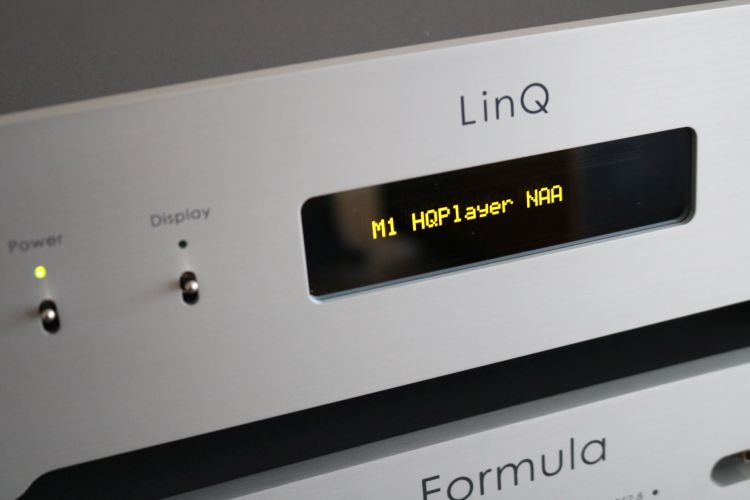
Listening
For a refresher of how the LinQ performs, please read part 1 of my LinQ review. In short, I think it is the very best streaming endpoint that I have come across and that’s why I have added it to the HFA inventory for permanent use as THE reference.
For this review, I will use the LinQ with the Formula xHD DAC with V2 output board and the Audio-GD Master 1 preamp.
UPnP, SqueezeLite, HQPlayer
For control of a generic UPnP server implementation, I recommend mConnect HD for iPad and BubbleUPnP or Hi-Fi Cast for Android. If you have jRiver Media Center and use it for UPnP then I highly recommend jRemote.
When using Qobuz or Tidal services, the app is just a controller for the UPnP module of the LinQ. The streams do not travel through the iPad or iOS but are managed directly between the Qobuz or Tidal web provider and the LinQ.
For Squeeze, I recommend iPeng for iPad. It’s a great app with a lot of functionality while remaining non-cluttered and easy to use. For Android, there are Squeezer and Squeeze Controller but these are a lot more utilitarian than iPeng. The resulting sound quality is extremely good, in some cases pretty much indistinguishable from the ripped CD and in some cases, such as with modern, hi-bitrate/sample rate productions, better than CD.
HQPlayer is available as a full desktop version for Windows, Linux and MacOS. HQPlayer Embedded, finally, is available as an add-on option for most music servers and this is what I use for this review.
The matter of Roon certification, and Aqua’s decision to move forward without it, comes at a point in time when recent experiments that I carried out have pointed out that UPnP and SqueezeLite both yield a tighter and more articulate sound that RoonReady, or Roon in general. UPnP is not compatible with Roon and thus must be used with another server component, such as jRiver Media Center, which is what I use, as well as a UPnP or DLNA-compliant endpoint. Likewise, for SqueezeLite, an LMS server must be used but Roon does offer compatibility as a streaming endpoint.
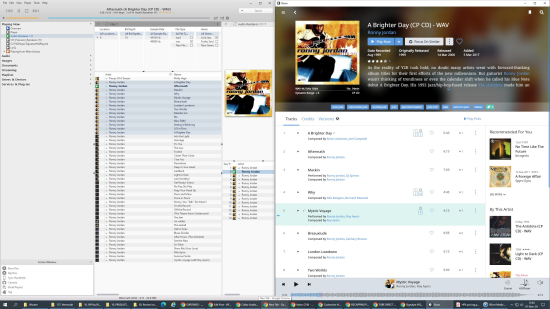
Above: comparing jRiver UPnP to Roon with HQPlayer, both streaming simultaneously to the respective modules in the Aqua LinQ.
While I found that using Roon Server with SqueezeLite as a Zone in Roon sounds slightly cleaner than Roon Server with RoonReady, a pure UPnP or LMS+SqueezeLite solution provides the tightest, cleanest, most accurate sound. Between these two there are very subtle differences but these are negligible. Between these two and Roon, however, I hear a significant difference, Roon sounding fuller, heavier and darker and less articulate. Now, these differences may be open to interpretation and, depending on the circumstances, one may well prefer the smoother Roon sound, I’m just pointing out that these differences exist and that they should be taken into consideration.
I first heard these differences when comparing the LinQ’s UPnP and Roon modules but have since carried out several more experiments that all yield the same relative differences, also when the LinQ is not at all involved, indicating that there is a universal difference.
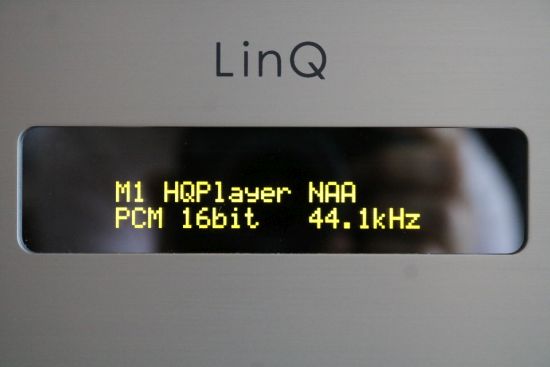
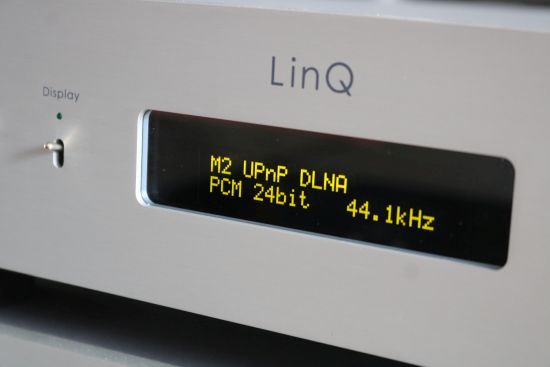
After reviewing the LinQ in July, I was divided between using Roon and its fantastic interface (not to mention Qobuz and Tidal integration) or UPnP and the more basic jRemote interface for jRiver or even iPeng for Squeeze. But now, there’s also HQPlayer!
Besides functioning as a bridge between Roon and an HQPlayer-compatible endpoint and offering a wealth of processing potential along the way, when comparing two simultaneous streams and switching between them using the LinQ input selectors, I found that Roon with HQPlayer sounds damn near almost as good as jRiver with UPnP. The latter method still sounds a smidgeon more articulate but, as with UPnP versus LMS+SqueezeLite, the difference is negligible.
This is big news because now we can make use of all of Roon’s advantages while having absolutely fantastic sound quality!
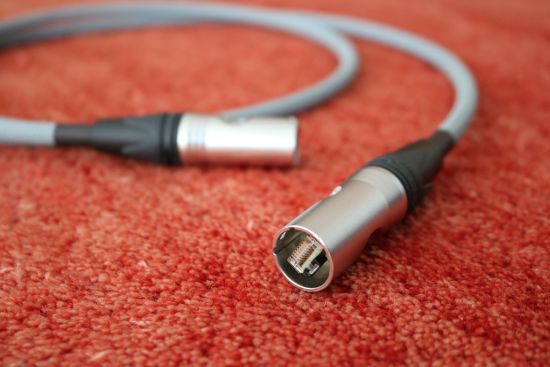
G2 AQlink I2S cable
In the original LinQ review, I already discovered that AQlink (First Gen) is the best way to connect two Aqua devices. Now, Aqua has issued a new G2 version of the AQlink. I have one for review as well as an original “G1” version for comparison. Also, I now have the excellent Jorma AES/EBU digital interlink for further comparison.
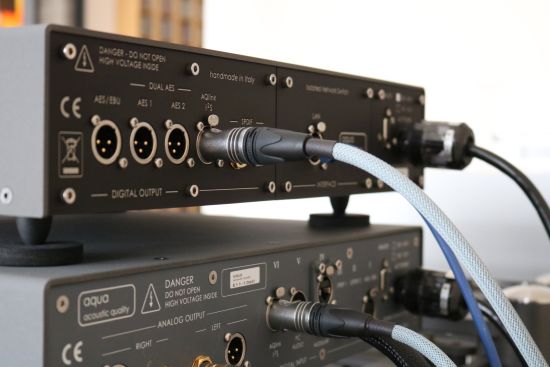
Whereas the Jorma showed every other regular digital cable that I tried against it who’s the boss, there is no arguing with the I2S interface’s inherent superiority. In all honesty, the differences with the G1 cable are not huge, certainly smaller than those between the streaming formats. But the AQlink cable does provide a slightly tighter and more articulate sound, along with a slightly more expansive soundstage depth with more distinct placement of the sounds within it. This, in turn, benefits the wrap-around effect and in turn, the emotional involvement.
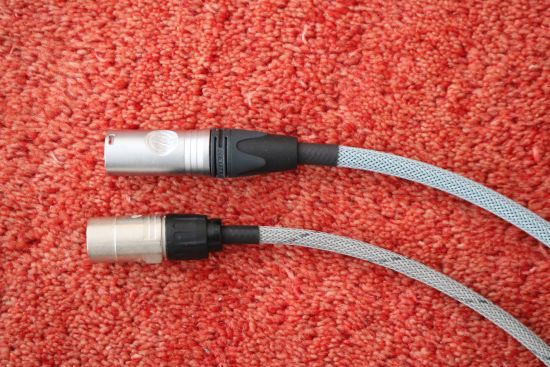
On top: G2 AQlink (with beefier connector and thicker, stiffer cable), on bottom: G1 AQlink
Stepping up to the G2 AQlink cable, the upside of the I2S format is made even clearer. This cable retains all the qualities of the G1 but sounds even more authoritative, incisive and robust. Even though the G1 cable already improved on the Jorma which itself made all other cables sound a little softened and filtered, the G2 cable, in turn, makes the G1 cable sound soft. Go figure.
We’re still talking about nuances here but I strongly feel that they are significant enough to make the AQlink the preferred connection for connecting two Aqua products.
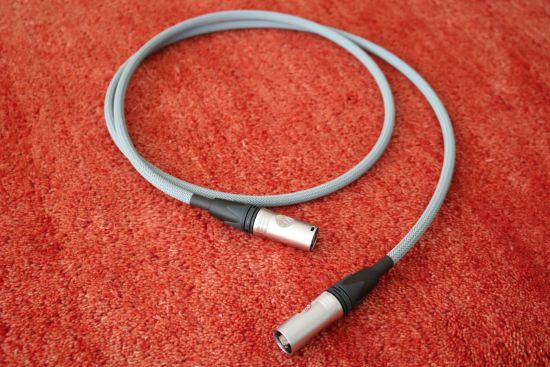
At 365 euros for the original (G1) cable or 385 euros for the new G2 cable, the AQlink is absolutely decently priced, especially when you consider that it will cost many multiples to come close using an AES/EBU connection.
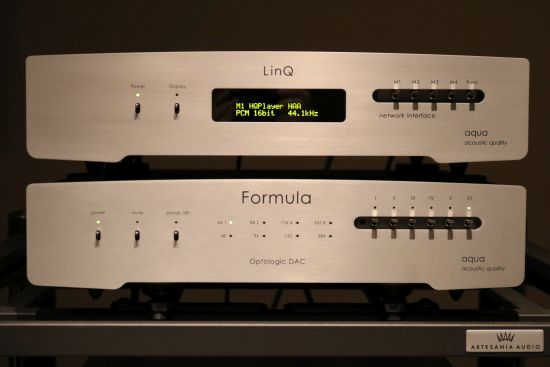
Update 16-03-2021 – HQPlayer Core + NAA
Now shipping: the HQPlayer Core Module for Aqua LinQ. This concerns a slot-in module just like the one for UPnP and NAA. Now, rather than running HQPlayer on the computer that runs the server application (in my case Roon), the new module provides the functionality to stream directly to it from Roon using RoonReady. This way, there are three separate computing devices, each dedicated to a part of the process: the core/server, the HQPlayer software, and the renderer. The new Core is zero-configuration (Plug and Play), the HQPlayer license key is pre-installed and the LinQ is ready for use.
The focus for this new module was to create an Audio Engine for Roon with zero-setup and to combine this with even better Sound Quality. The Core exploits the new i.MX8 micro (ARM 64bit), with low‑latency and revolutionary power efficiency using a customized (UNIX-based) lightweight kernel.
Roon can be configured to implement HQPlayer into a Zone. HQPlayer owns the final connection to the Audio Engine, and Roon is just passing along a stream of bits from media files or Streaming services such as Qobuz and Tidal.
Conclusion
The addition of the HQPlayer module allows using Roon and all of its benefits along with even better sound than was possible using the now-discontinued RoonReady module. Additionally, Aqua’s modularity ensures that the product remains up to date. I fully stand by my original conclusion that the Aqua LinQ is nothing less than a milestone product. It is the very best network endpoint that I have heard and I enthusiastically recommend an audition!

Videos on the Hifi-Advice YouTube Channel
How Sooloos became Roon
HFA Front Page
Try out Roon for yourself
External Links
Distributor for the NL/Belgium: Hexagon Audio
Manufacturer’s website: aquahifi.com
Signalyst website: signalyst.com
Read Also
Aqua LinQ part 1 (Initial LinQ review)
Aqua LinQ part 3 (HQ Player Core + NAA module)
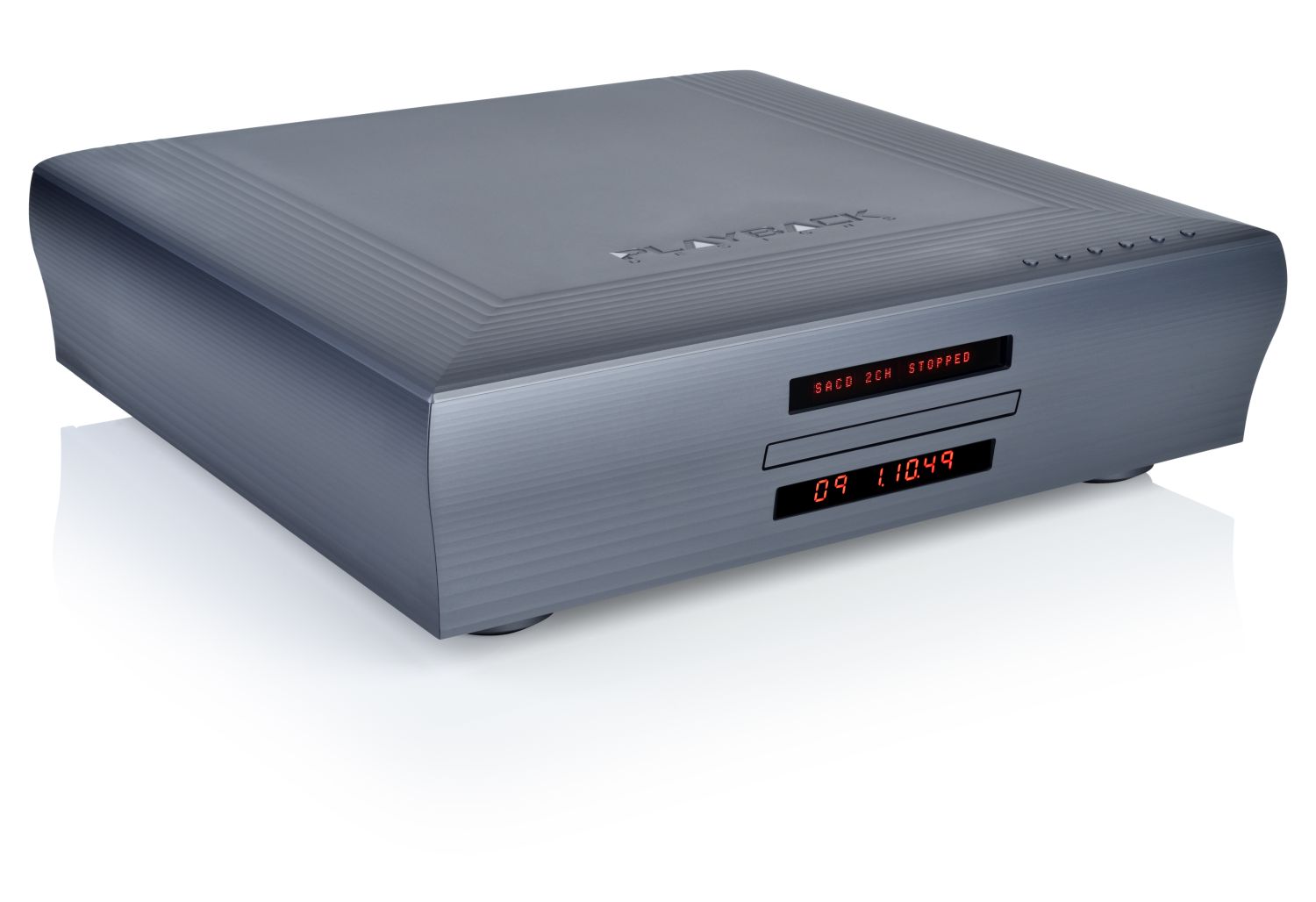







I am currently using JRiver on a PC with a JCat Femto card connecting directly to my Aqua Formula XHD. I built an Intel NUC Roon Rock this past weekend to try. I installed Roon Bridge on the same PC where I run JRiver. The sound quality is pretty close to Jriver, with some tracks sounding slightly better on Roon and some better on JRiver.
Is there a use case for a LinQ for me? I have been reading about it and thought it would be nice to eliminate the PC in my listening room and be able to stream from Roon on the Intel NUC but if I will still need to keep a full blown PC for HQPlayer then is it worth doing? Or should I run JRiver on the Intel NUC instead of Roon and then stream to the LinQ?
Hi John, I’ve no experience with the JCAT Femto USB card but even when presuming that it is very good (which it most likely is indeed), I am confident that the LinQ will further improve things for you. The main idea behind using a separate network endpoint (renderer/streamer) is that it is isolated from all the noise that is inevitably generated inside a PC. As I understand it, it is extremely hard to prevent this noise to travel along on a USB connection. UTP has galvanic isolation built into the protocol but even so, further isolation still pays off. That’s one of the reasons why audiophile switches can make an audible difference. You will need HQPlayer if you want to stream Roon to the LinQ but it’s not required to use a full-blown PC for that. You can also use a NUC for the Roon/jRiver/HQPlayer software indeed and you can even place that computer in another room. BTW, if you don’t need Roon and will stick with jRiver, I’d suggest using UPnP. It’s easy to set up and sounds best and you won’t need HQPlayer.
Hi Christian,
Can you give your opinion on S/Q for Antipodes K50 into Aqua La Scala Optilogic 11 compared with LinQ/HQ player to La Scala .
I have Cx/Ex combo with La Scala dac and was about to upgrade to K50 but after reading your positive review of Aqua LinQ I would appreciate your thoughts.
Hi Lee, although the LinQ has the tendency to reduce the influence of upstream equipment, you can still hear the difference between the CX and the K50 even when streaming to it. But really between the K50 and the LinQ, it comes down to the following two questions. Do you want the smoothest and most organic sound? Then go for the K50 and use its AES or S/PDIF outputs or use its USB output for a tighter and more controlled delivery. Do you want the highest, fastest, most articulate, and most transparent sound? The go for the LinQ.
Hi Christiaan,
Thanks for your input, I’m going to audition both to be sure as I think either product will sound great but as you point out it comes down to personal preference. Appreciate the great reviews.
Indeed:-) Happy listening Lee!
HI Christiaan,
Did you find any difference using NAA module in Aqua and HQ core is running on the computer with Roon vs HQ Core + NAA module in Aqua and only Roon is running on the computer? I tend to think that as less processing streaming does the better.
Hi Bogdan, while there is some truth to convictions such as “linear power supplies are better”, “processors must not work hard”, or “in server/streamer solutions, the hard work must be done by the server”, there are always exceptions and it all depends on the implementation. In the case of using the LinQ purely as a HQPlayer streamer or using it with the Core+NAA module, I found the latter to sound best. You can read all about this in the latest installment of the LinQ review. Why is it better in this case? I don’t really know. Perhaps it’s because the hardware is now optimized for the software? In any case, I can tell you that inside the LinQ, the NAA renderer module and the Core+NAA module are on separate boards and in separate slots.
Hi Christiaan,
Many thanks for your interesting and insightful reviews. I have Aqua LaScala Optologic mk2 dac and consider future upgrade by adding LinQ streamer/interface. I am potentially interested in getting LinQ with NAA and HQplayer core modules based on my current experience with HQplayer embedded which I am enjoying almost daily. I typically play music from Audirvana Studio (Mac) to HQplayer embedded on PC, the latter as UPNP renderer connected to Aqua dac. I also use mConnect and JPlay controllers on iPhone to stream local library from NAS via Minim Server (also on NAS) and of course Tidal and Qobuz. My apologies for this extensive description of my listening habits.
Long story short, do you know if HQplayer core module retains its UPNP capabilities or is this function stripped. I do not use Roon and if UPNP is not implemented in Core module it will be no go for me. I would opt for DLNA module instead.
Would greatly appreciate your comments.
Hi Chris, The HQPlayer Core + NAA module is optimized around NAA and does not support UPnP. For that, you will indeed need the separate UPnP module. Or both:-)
hi
how to update with last update available of Signalyst HQPlayer 4 Embedded my Aqua run with 4.30.3 version but 4.35.2 is available, and it’s possible to upgrade for 5 version ?
thank you
For this, I would suggest checking with your dealer or with Aqua.